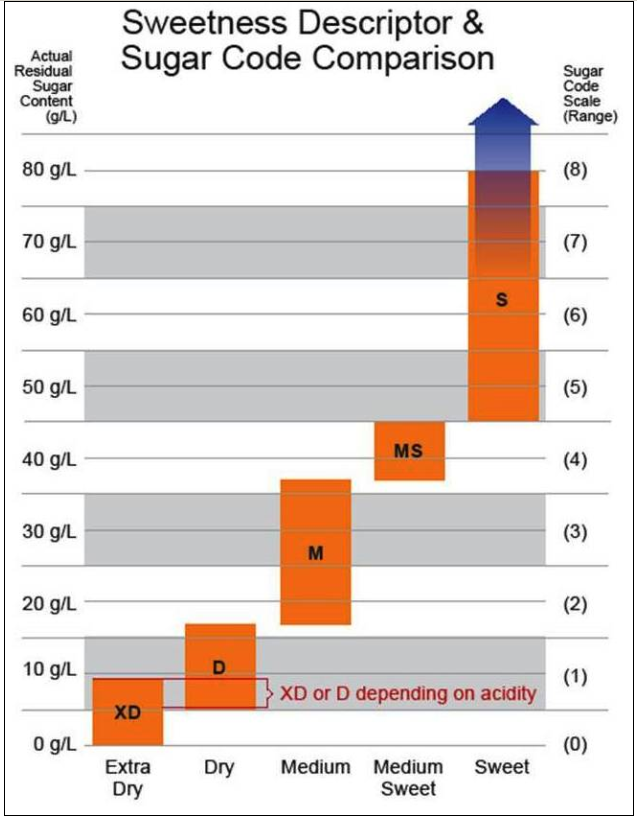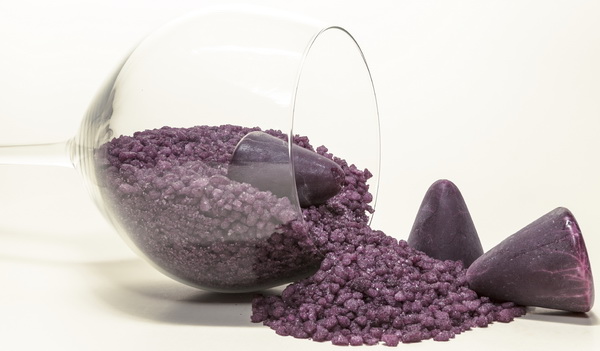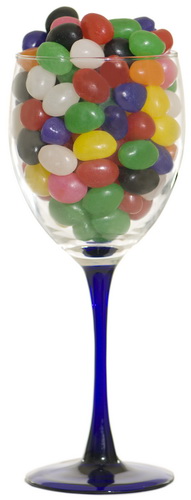Have you ever wondered what those sugar codes mean on the liquor store shelf?
There are several different sweetness charts and coding systems on the market, but they’re not that far apart from each other in describing the residual sugar level in wine.
I believe that it’s critical to list the sweetness level of a wine with every review that I write to give more information about each wine to my readers, some of whom look for a bone-dry wine while others have a sweet tooth.
Posting the sugar codes are also vital for health reasons, whether it’s someone with diabetes who can’t drink sweet wine or someone who wants to consume less sugar overall or someone on a diet cutting back on calories.
Calories also come from the level of alcohol in wine, which is why every review also notes the level of alcohol.
In fact, you can search for wines based on their sweetness, alcohol level and more than 25 other parameters, either individually or combined on the Advanced Search engine for more than 200,000 wine reviews.
Personally, most of the wine I drink is both dry and 13% alcohol or less, as I like to both smell and taste the wine’s aromas without being overwhelmed by the heat of alcohol.
And yes, we talk dry and drink sweet. Many people think that an extra dry wine is the mark of sophistication, whereas off-dry or sweet wines are training wheels wines for those transitioning from vodka coolers.
Not so. It’s all a matter of balance, and you can find both pleasure and complexity in wines with a range of sweetness levels.
I keep my own sugar code descriptors short and sweet (couldn’t resist ;)
Extra Dry
Dry
Medium Dry
Medium Sweet
Sweet
Many liquor stores use a numeric code to express the same sweetness levels:
0 = Extra Dry
1 = Dry
2-3 = Medium Dry
4 = Medium Sweet
5+ Sweet
The LCBO has recently moved from the numeric system to the word descriptors, adding these adjectives:
Extra Dry (XD) =No perceived sweetness, clean, crisp, acidic finish.
Dry (D) = No distinct sweetness, well rounded with balanced acidity.
Medium (MD) = Slight sweetness perceived.
Medium Sweet (MS) = Noticeably sweet.
Sweet (S)= Distinctively sweet.
The LCBO does in-depth sensory analysis and testing and consumer and has created its own algorithm to assign sweetness levels to wines.
It’s based on consumers’ perceived level of sweetness when tasting the wine, not strictly on grams of sugar per litre.
For example, w with a sugar code of zero (0) may have up to 5 grams of residual sugar per litre of wine. A sugar code of 1 means 5 to 15 grams per litre, and so on in this LCBO chart:
 The most precise and scientific sugar code systems reflect that actual and measured sugar content of each wine and are expressed in grams of sugar per litre of wine, though most of us don’t differentiate sweetness beyond level 5:
The most precise and scientific sugar code systems reflect that actual and measured sugar content of each wine and are expressed in grams of sugar per litre of wine, though most of us don’t differentiate sweetness beyond level 5:
Comparison of Sugar Codes to Actual Sugar Content
Sugar Code Sugar Content g/L
0 0-5
1 5-15
2 15-25
3 25-35
4 35-45
5 45-55
6 55-65
7 65-75
8 75-85
9 85-95
10 95-105
11 105-115
12 115-125
13 125-135
14 135-145
15 145-155
Here are my favourite extra dry wines with 13% alcohol or less scoring 90 points or above. And here’s the same search but with dry wines.









